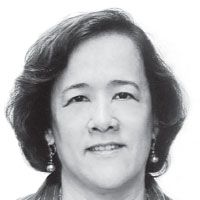What really ails Phl public health system

With permission of an intern doing the round of community medicine in a remote barangay in Cavite, I am reprinting a field report he submitted for academic requirement. It is quite timely as Dr. Enrique Ona, Secretary-on-leave of the Department of Health (DOH) has been placed under investigation for questions being raised on the procurement of P833 million worth of vaccines in 2012.
On internship at the University of the Philippines-Philippine General Hospital (UP-PGH), my son wrote this field report about two weeks ago. The narration of facts of one medical case, I’m quite sure, is replicated many times all over the country to best understand the current state of our country’s public health system — two decades after this was devolved out of DOH down to local government units. He wrote:
“I’m quite certain that every intern who has rotated as a triage officer at the emergency room of UP-PGH at Taft Avenue in Manila would be accused of having prejudice to patients who come all the way from Cavite. We would always frustratingly ask the patient why he or she has to travel all the way to PGH when there are a lot of hospitals, both private and government-run, in their own province of Cavite.
The most common answers to this question are: “Wala pong public hospital doon” (We have no public hospitals there). “Sinisingil po kami ng P100,000 para po ma-ICU pasyente namin”(They require us to first pay P100,000 before they admit our patient to their intensive care unit). Or, “Wala na daw po kasi bakante doon” (There is no more available room or bed).
Unfortunately, due to the usual huge number of patients already confined at PGH, not every one of these Caviteño patients could be admitted. This, despite they’re having travelled a far distance to avail of the hospital’s emergency services.
So after being extended emergency medical assistance by the hospital’s emergency doctors and medical staff, these patients who are well enough are subsequently advised to transfer to other public hospitals around Manila or Quezon City for further treatment. There, they may perhaps have greater chances of possibly being admitted for confinement.
One Tuesday afternoon while on community medicine with my fellow intern/partner in the middle of our regular clinic at the barangay health center of Palocpoc I, Mendez, Cavite, a woman carrying a baby boy came in to seek consultation for her child’s medical problem. The mother began telling us that her child is three months old but has been having cough for almost a week already. According to her, she has been noticing her baby has obvious difficulty of breathing. What worried her more is that her baby, while having colds, also sometimes has off-and-on fever for one week already.
On examination, the baby was diagnosed of showing signs of tachypnea (fast breathing), with alar flaring (both nostrils dilating); supraclavicular and subcostal retractions (retractions both in his shoulders and chest); and upon auscultation, coarse crackles were heard on both lung fields. These findings are suggestive of respiratory distress secondary to pediatric community acquired pneumonia.
Medical books and experience taught us that a child diagnosed with this should be immediately admitted to hospital. So we wrote a referral letter and advised the mother to bring the child immediately to the nearest hospital. However, the mother told us she had no money. That’s why she brought her baby to the barangay health center where, she said, she thought her ailing baby could get free medical assistance.
This is not the first time that I saw a young child with pneumonia. If left untreated, this could be fatal, especially for babies. We tried to explain and convince the mother to find a way to get her child full medical attention at the hospital. The mother just stared into space and eventually cried not knowing what else she could do.
Because of this, my partner and I had to huddle with the barangay health workers and the nurse-on-duty to plan on what we can do to help the patient. The barangay secretary fortunately was also around at the time, heard us and offered to help secure an ambulance to transport the baby and his mother.
With the means of transport solved, we tried to find where is the nearest hospital to bring the patient with such dire financial situation. We learned from the barangay health workers that the nearest public hospital was in Trece Martires, also in Cavite, approximately 30.6 kilometers from Mendez.
Since we already have an ambulance, the barangay health workers and the nurse, however, were reluctant to bring the baby patient there. From previous experience, they told us, the staff in that hospital always rudely turned away patients, claiming their hospital is already full.
Despite being wary and quite sure of what lay ahead of them in that hospital, they were still willing to accompany the mother and her very ill baby. To assuage them, I gave them sort of a pep talk that once the doctors see the poor condition of the ailing baby, they would surely require that the patient be immediately admitted.
So off they boarded the ambulance — the mother and her child together with a barangay health worker and the nurse. We also chipped in and gave the mother some money just in case they would need to spend for medicine and other things her baby might need.
We wanted to go there with them but we had to attend to other patients in that rural health unit of Mendez. Later that day, the barangay health worker visited us in our foster home telling us the baby was thankfully admitted in that hospital. However, she rued, they had to go through their admission process which she likened to going through the eye of a needle before the baby was finally confined.
They had to wait several hours in the emergency room because the place was crammed with other sick people who were also there to be treated. More so, the emergency room staff, as they expected, were screaming at the poor patients all over the place. As they earlier feared, they were told to transfer their patient to another hospital, But knowing the serious condition of the baby, they stood their ground. They insisted the patient needs immediate full medical attention and confinement right there, right now.
We could only breathe a sigh of relief. We’re extremely elated with the extra efforts of the barangay health worker who took up the cause of the poor baby boy. And this is a battle won for humanity that day.
This experience opened my eyes to the situation faced by these Caviteños, like other Filipinos coming from far flung areas who go to PGH just to seek medical care. When I was still a clerk in Ospital ng Maynila, we also had several patients who came from Cavite and they would also tell us the previously mentioned reasons every time they are asked why they have to travel far to get medical relief.
There are a lot of hospitals in Cavite, that’s true. But almost all of them are private hospitals, the medical services of which the indigent population could not afford. On the other hand, while there may be public hospitals in the province, these facilities are not enough and almost always are full to the brim with patients.
Worse, these public medical facilities are also bugged with the perennial problems of government-owned hospitals — from lack of medical staff and beds to shortage of bandage and other basic hospital supplies. That is the closest reason why these indigent patients from Cavite and other far flung areas travel at risk with their medical condition just to reach Manila in the hope of being admitted and treated at bigger state-run hospitals like PGH.”
This is just one sob story of the many other horror stories that underprivileged people have to cope with in their daily battle to live. Sadly, their situation will get worse if they get sick because what ails the public health system spreads its affliction with no mercy.
- Latest
- Trending

























